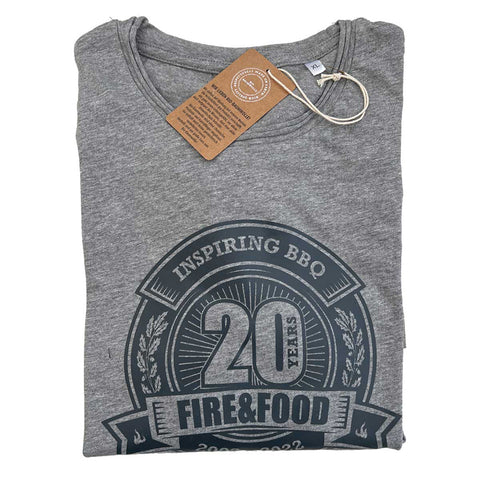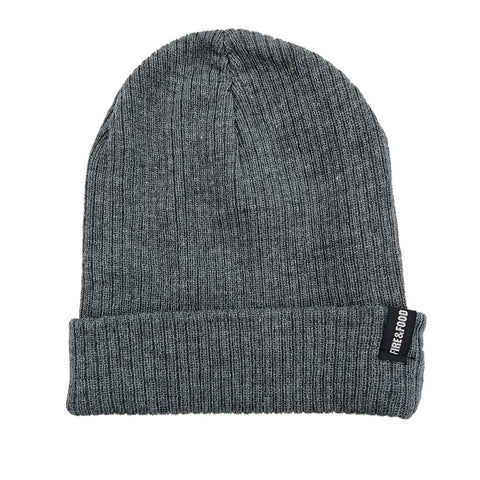SOUS-VIDE: First cook then grill!
Sous-vide devices are established worldwide in professional kitchens - especially in top-class restaurants. They make preparation and meal planning much easier and are also becoming increasingly popular with ambitious amateur cooks. Sous-vide cooking multiplies the natural flavor of the food, and this low-temperature cooking method also preserves vitamins and minerals. There is only one thing this method cannot do: spoil our taste buds with delicious roasted aromas, which we as avowed grillers and barbecuers would be reluctant to do without. One person who has not only thought about how to change this, but has now achieved expert status through creative experiments is Andreas Rummel. The grill and barbecue expert discovered sous-vide many years ago when he saw chefs on stage at an event who "cooked" meat and fish in a water bath and enthusiastically reported on what this super device can do.
When the skeptical spectators were allowed to try it, he was overwhelmed by the taste of the perfectly cooked food. It was the initial spark for him to devote himself more intensively to this technique - despite all his reservations, as this method is a real "time-waster" due to the sometimes very long cooking times. Relevant specialist literature was pored over and, for cost reasons, Andreas Rummel simply built the first digitally temperature-controlled water bath himself. The experiment began with an immersion heater, cool box, digital core temperature thermometer, a simple indoor fountain pump for water circulation and a strong pioneering spirit. But for the perfect sous-vide, he still lacked the crucial idea of being able to vacuum seal the food. It took a while before he came up with the simplest and at the same time most ingenious method, which he still uses to some extent today, despite having acquired professional accessories: a tall container filled with water and resealable freezer bags, the Ziploc bags.
Vacuum bag: Use a vacuum sealer, e.g. this one from Lava , to suck the air out of a bag and then seal it.
Rummel puts the food to be poached into this bag and seals it, leaving only a small opening. He then presses the bag under water so that the water pressure pushes all the remaining air out of the bag. If the bag is then completely sealed, the food is as good as vacuum-sealed. "This method has now become a cult in the grill and barbecue scene as Ossi vacuum sealing; the name refers to my East German origins," explains Andreas Rummel with a wink. "Thomas Vilgis (physicist at the Max Planck Institute for Polymer Research, editor's note) confirmed to me that this is all OK from a bacteriological point of view too. This method is also no problem for achieving the perfect level of doneness, because it is not the quality of the vacuum sealing that is crucial, but the exact temperature control, as the scientist explained to me.” Once the grill expert had mastered the exact coordination of food, poaching time and temperature during sous-vide cooking, it was time for him to take the next step: The combination of perfectly cooked meat, fish or vegetables and delicious roasted aromas - grilling finally came back into play. Since then, Andreas Rummel has been talking about “thermal marinating” when it comes to optimally preparing food for grilling. The advantages of thermal marinating are very clear to the grill professional: “For me, the taste experience comes first! That is also the reason why sous-vide is also catching on among amateur chefs.
This process intensifies the taste of fresh products in a unique way. For the professional sector, e.g. in the catering industry or in grill catering, the good planning is simply fascinating. I can prepare the barbecue evening perfectly with thermal marinating without any loss of quality, then cool the grilled food down, store it and bring it back up to temperature as needed and finally just refine the taste on the hot grill grate. This method also helps to get high-quality products such as beef steaks to the perfect cooking point. On the grill, at temperatures of at least 250° C, this can sometimes go wrong. But if the meat is brought to just before the desired core temperature using sous-vide and then grilled briefly again at very high heat, success is almost guaranteed."
Before you can really get started with the combination of sous-vide and grilling, Andreas Rummel has one important tip: When cooking slowly at low temperatures, not only does the taste increase (which is why you should always use only perfectly good food) - any bacteria also feel very comfortable in this environment. The basics of kitchen hygiene should therefore be followed with the utmost precision. The grill expert always works with latex gloves.
Packaging options for sous-vide:
1. Vacuum bag (Use the vacuum sealer to suck the air out of a bag and then seal it.)
2. Chamber vacuum sealer (closed vacuum system)
3. Slide seal bags (Press the air out of the bag by immersing it in liquid.)
4. Mason jars (jar with airtight lid must be completely filled with liquid.)
5. Cling film (wrap the film very tightly around the food.)
Teres Major (recipe by Andreas Rummel)
The teres major muscle is part of the thick brisket, the rear part of the shoulder and is also called the butcher's cut, petit tender or flat fillet.
Ingredients:
• 1 or more Teres Major beef (300-400 g each)
• Salt
• Pepper
Preparation:
Vacuum seal the meat in the bag next to each other and pre-cook in the sous-vide basin for 1 hour at 55° C. Then grill the meat whole on the infrared zone (sizzle zone), or heat the grill as much as possible and place the meat on it briefly until it has nice grill marks. Season with salt and pepper and cut up to serve.
Why vacuum seal?
Unpackaged food would be damaged or leached out. Food cooks faster and more evenly under vacuum. With a tightly sealed bag, oil, fats, herbs and spices can be added during cooking to flavor the food.
Always make sure that the vacuum-sealed bags no longer contain any air bubbles. Otherwise the food will float at the top of the basin and cook unevenly. If necessary, weigh it down with an object.
At higher temperatures, only use bags that can withstand high temperatures. Some plastics lose their stability at temperatures above 70°C.
Read the sous-vide device's instructions carefully to find out how much food can be cooked at the same time. An overfilled basin will result in unevenly cooked items.
The Lavide Sous-Vide Set from Lava, consisting of
-
Lavide Sous-Vide Stick LX.20
- Sous-vide basin with lid
- Sous-vide bag holder
and various vacuum sealer sets can be found under the grill accessories section in our FIRE&FOOD shop.





















